I am curious about aspects of female Osprey behavior I have observed recently, and I wonder if they are clues as to whether or not the eggs they are incubating have hatched.
I have been documenting the Ospreys along a one-mile stretch of the Willamette River in Eugene, Oregon, since 2020. I refer to the closest nest as the Boulders nest, which has been used continuously for many years. Since last year, a second nest, one mile downstream, has been occupied, which I call the Owosso nest.
Ospreys are “the only raptor that plunge-dives to catch live fish as its main prey source” and were seriously threatened by the use of pesticide DDT between the 1950s and the 1970s.1
…the last half of the twentieth century, Osprey eggs were central to a biological tragedy when it became evident that the eggs of predatory birds and a chemical agent called DDT did not mix, with the result that the shells of Osprey eggs became too thin to bear the weight of incubating adults, and—perfectly fresh or not—fractured. The result was near-blanket nest failure, leading to a widespread and dramatic decline in Osprey populations.2
In the Willamette Valley, there are over 230 nesting pairs of Osprey, according to a report from 2001.3 Given all the nests we have noticed on our drives around the valley, that number must be larger now, over twenty years later.
It is early June, and it is time for an update on these two nests that I have been following along the Willamette River.
Boulders Nest
While Ospreys are incubating their eggs, there is little to see at the nests, and the Boulders nest is so deep it is almost impossible to detect if anyone is home without a webcam.

I was observing the Boulders nest on June 4, and all was quiet, which meant I couldn’t be sure the nest was occupied. As I was getting ready to take down my tripod, I heard distinctive call notes near the nest, which alerted me to quickly start taking photos. The male landed with the remains of a fish (see the photo directly above).4
The female quickly claimed the fish and flew off, clutching it in her talons, as shown in the photo at the top of this blog post. The male settled in to the nest for a session of egg incubation. It seems logical that the female would only leave the nest with fish if her eggs hadn’t yet hatched because hatchlings would demand their share, but I wasn’t sure if this distinction was described by experts.
I turned to a book by the Osprey authority, Alan F. Poole, and found the following explanation of female feeding behavior while still incubating:
As the male approaches and lands, the female rises gently from her incubation crouch and moves slowly toward the male, grabbing the remains of the fish in one foot before launching off to a nearby perch…5
After hatching, the female Osprey stays in the nest to feed her nestlings, as Poole further explains below:
Parental behavior shifts after their young hatch, The male continues to provide all the food and to deliver each fish to the nest, usually after eating his share, but now the female stays at the nest after the male delivers and sets herself up to begin ripping that fish apart and presenting small bits to the young.6
I have concluded that as of June 4, the Boulders Ospreys were still incubating eggs in the nest.
Three days later, I noticed a change in behavior that had me wondering if the status had changed.
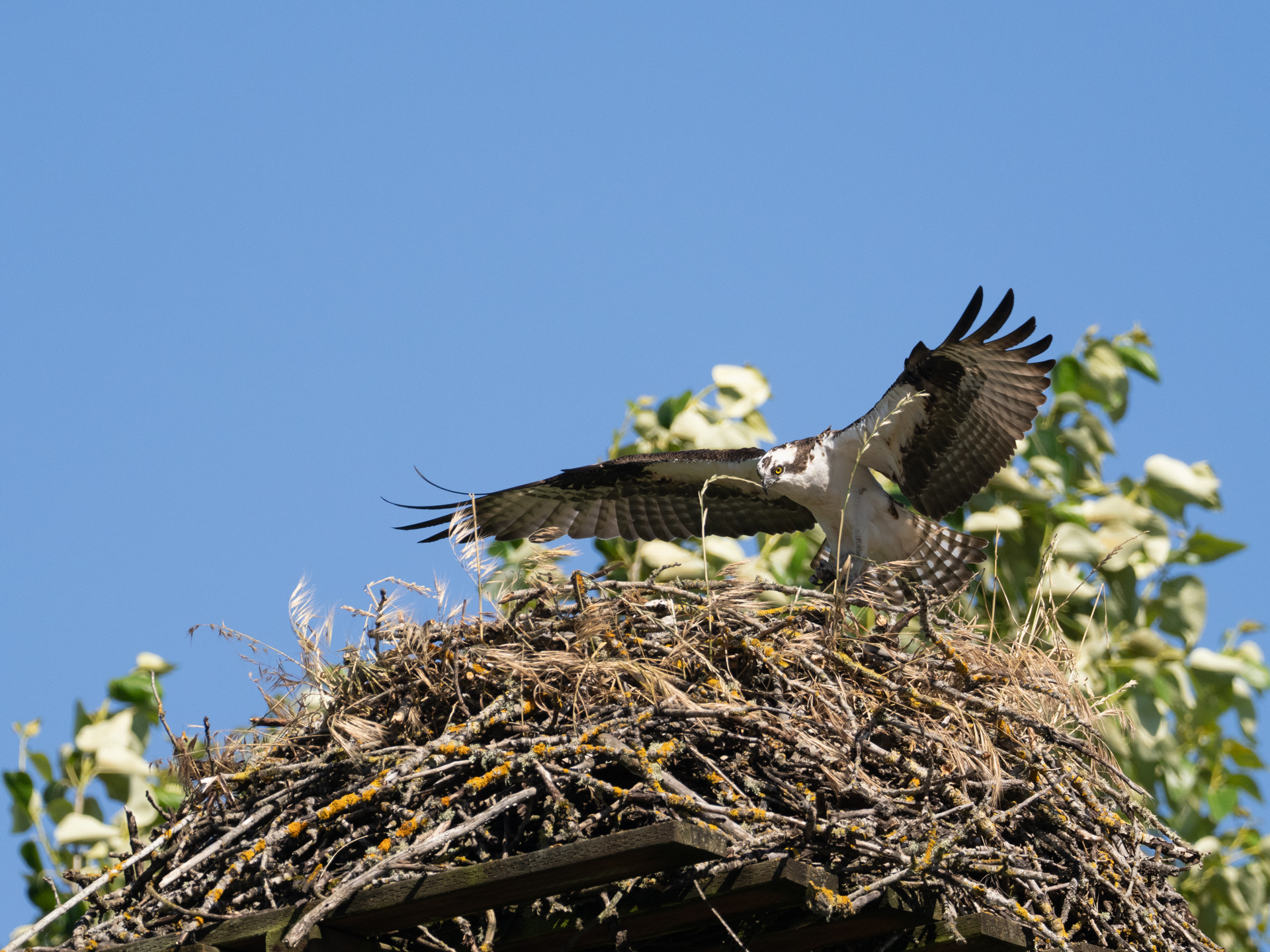
On June 7, the Boulder male Osprey landed suddenly, and although you can’t see it in the photo, I think he brought a small piece of fish. I observed the female eating in the nest this time instead of taking the fish and flying off as she did on June 4. I also think she may have been feeding hatchlings, based on her movement, although I couldn’t see the full scene because of the depth of the nest.
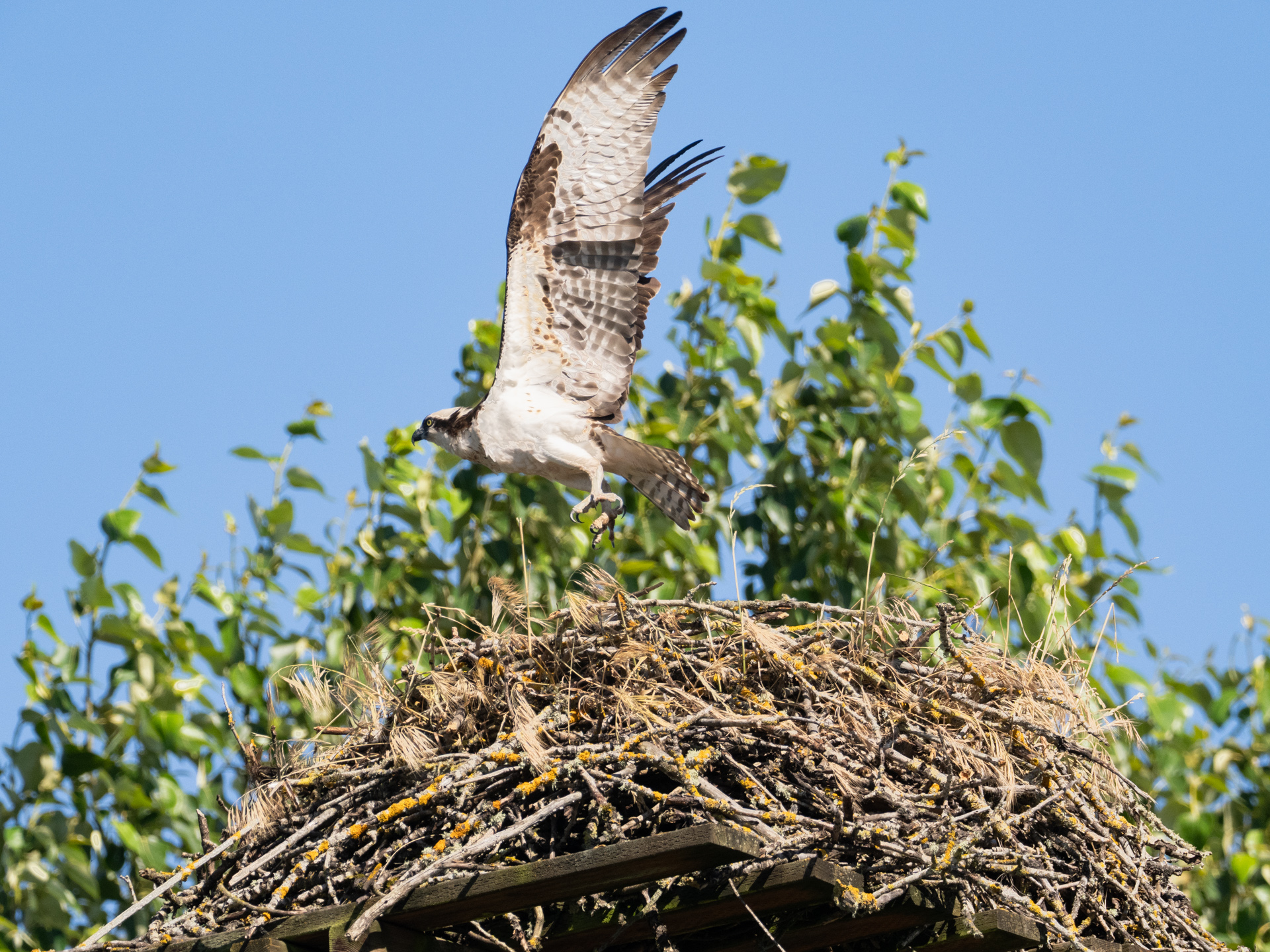
After about nine minutes, the female flew from the nest and returned a few minutes later with a small branch to add to the nest.
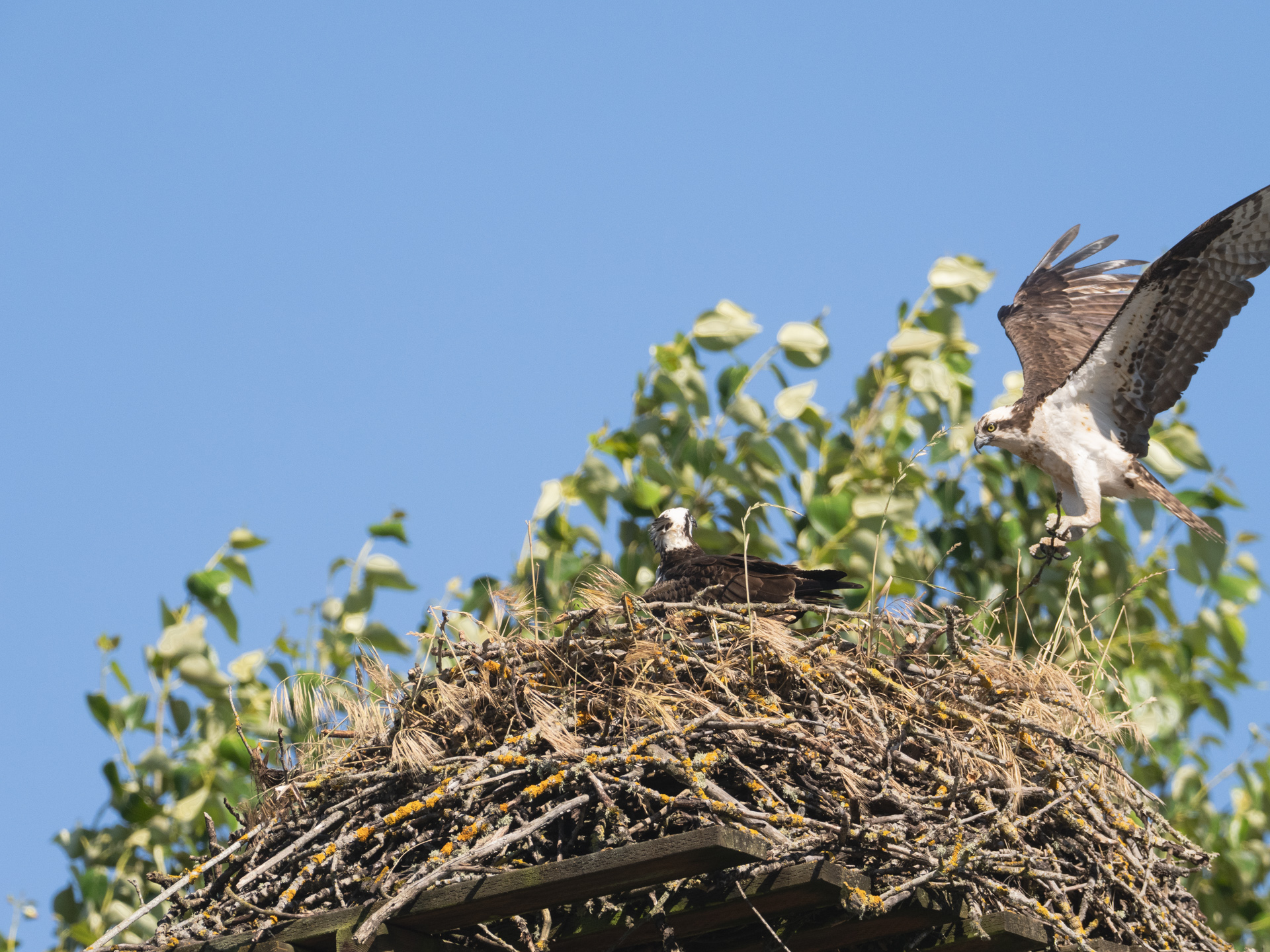
On June 9, I witnessed more interesting behavior by the female at the Boulders nest. The male flew over the nest but didn’t land, and the female remained silent, which indicated the male was not an intruder. Female Ospreys are known to make begging calls if they are hungry, and it appeared that she was eating, so I assume the male had recently delivered fish to the nest.
A few minutes later, to my surprise, the female flew from the nest, leaving it unattended, but returned in less than a minute. She landed with nothing in her talons but grabbed a long branch and attempted to move it—Ospreys frequently tend to their nests even after their eggs have hatched.
The female made a second short flight and again returned with nothing.
Although I can’t see inside the nest, I think it is likely the eggs have hatched since the female is frequently standing and eating in the nest.
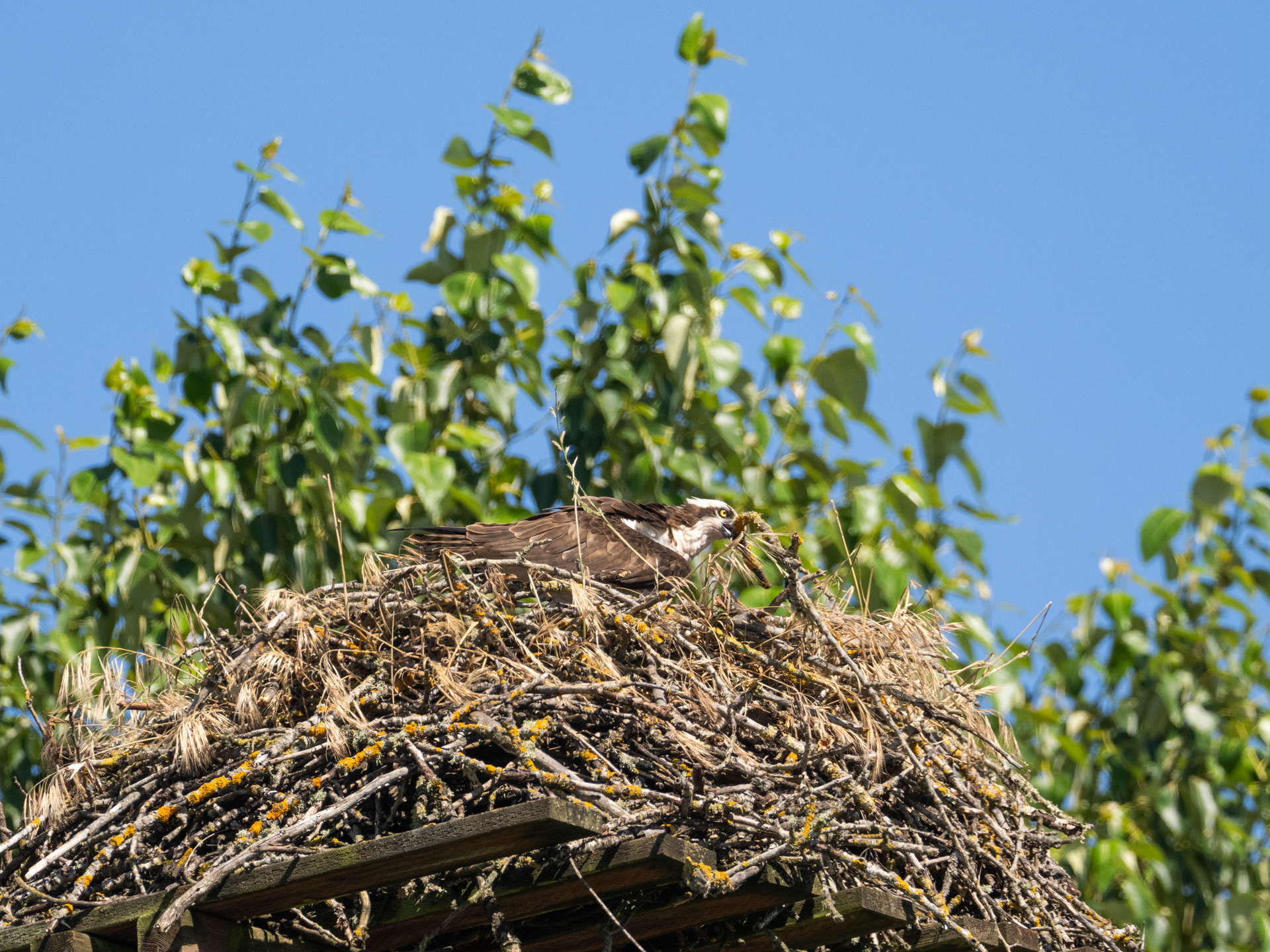
In 2023, I didn’t see a hatchling in the Boulders nest until June 29, so I suspect it will be a week or two before we see them this year.
Owosso Nest

The Owosso nest was occupied in 2023 after going unused for several seasons. The Owosso pair fledged one hatchling. I suspect the pair nesting there were only three or four years old, as I have read that inexperienced or late-nesting Ospreys have smaller clutches.
This year, I have seen the Owosso male bringing fish to the nest but haven’t captured or seen examples of the female flying off to eat her share, so I am uncertain if she is still incubating eggs or if they have hatched. We saw the top of her head in the nest on the morning of June 9 but didn’t see the male.
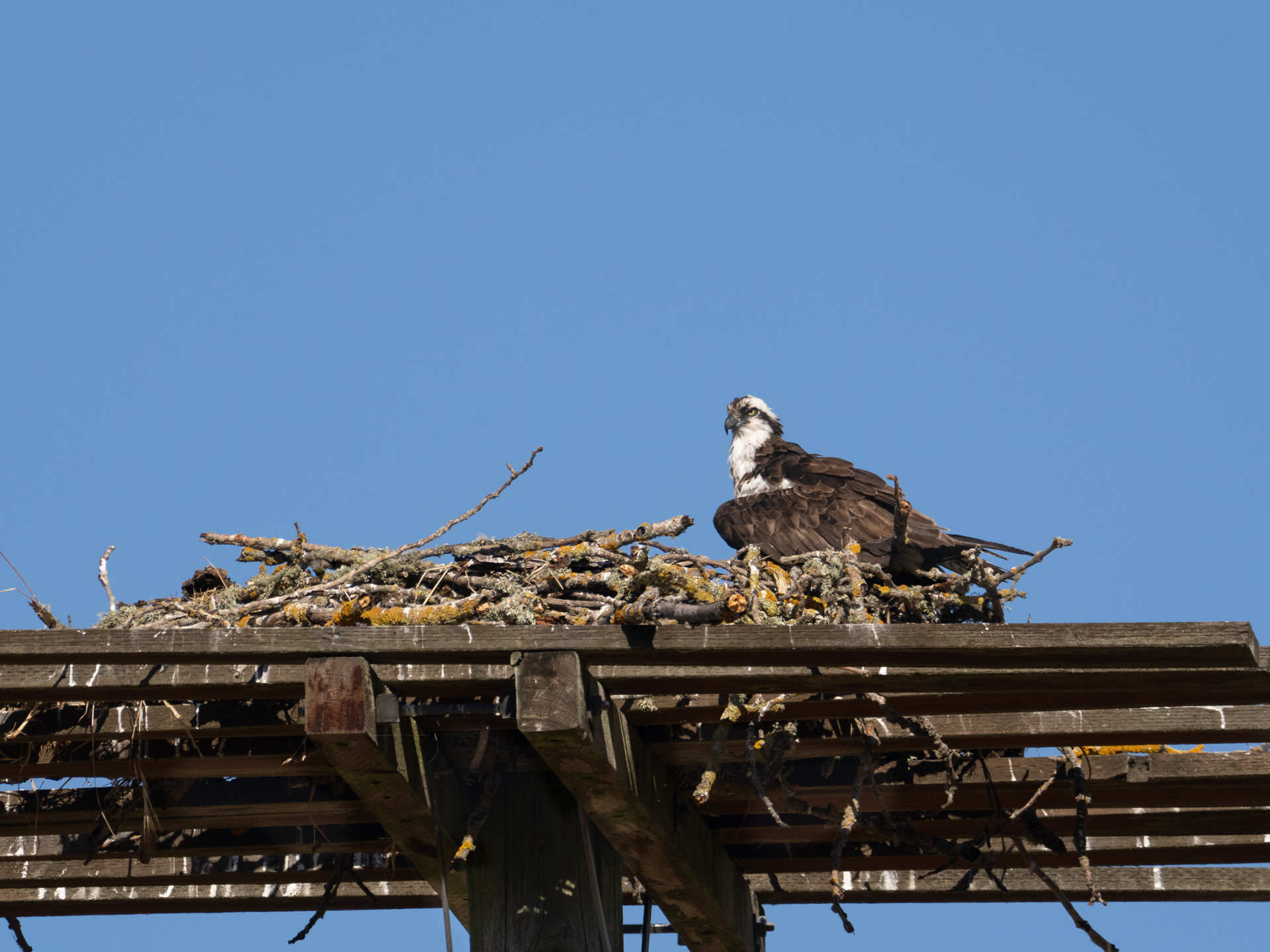
The first sign of the presence of a hatchling in 2023 at the Owosso nest was seeing the female holding out her wings in the nest on July 13, probably to shade a recently hatched youngster.
After all the questions and speculation, it will be a thrill to see hatchlings in both nests soon, and I am hoping that there will be three little ones in each nest this summer.
Why I Follow These Ospreys
I began photographing and blogging about the Ospreys in my neighborhood in 2020 as a COVID-19 project since it was nearly impossible to visit the national parks and wildlife refuges.
I was inspired by people like the intrepid naturalists who post daily observations on the wolves and other wildlife in Yellowstone National Park, a truly astonishing effort.7
At a time when there is a lot of discouraging news about climate change, habitat loss, and species extinction, it is therapeutic to have an Osprey nest so close that I can walk to it in less than five minutes. Better still, the viewing area is shielded by a tall hedge, so I don’t disturb the nesting Ospreys.
The continued nesting success of these resilient Ospreys reflects the health of the Willamette River habitat and gives me cautious optimism for the future.
- Cornell Lab of Ornithology, Birds of the World website (paywall). ↩
- Birds of Prey: Hawks, Eagles, Falcons, and Vultures of North America, Pete Duane with Kevin T. Karlson, p. 32. ↩
- PCDDs, PCDFs, PCBs, OC pesticides and mercury in fish and osprey eggs from Willamette River, Oregon (1993, 2001 and 2006) with calculated biomagnification factors, Charles J. Henry, Robert A. Grove, in Ecotoxicology October 2, 2008, p. 166. ↩
- Female Ospreys usually have a brown necklace, whereas males usually have nearly all-white chests. I often have to look at the photos to identify the gender of the individuals in the pair. ↩
- Ospreys: The Revival of a Global Species, Alan F. Poole, p. 94. ↩
- Poole, p. 98. ↩
- See yellowstonereports.org (paywall). ↩
